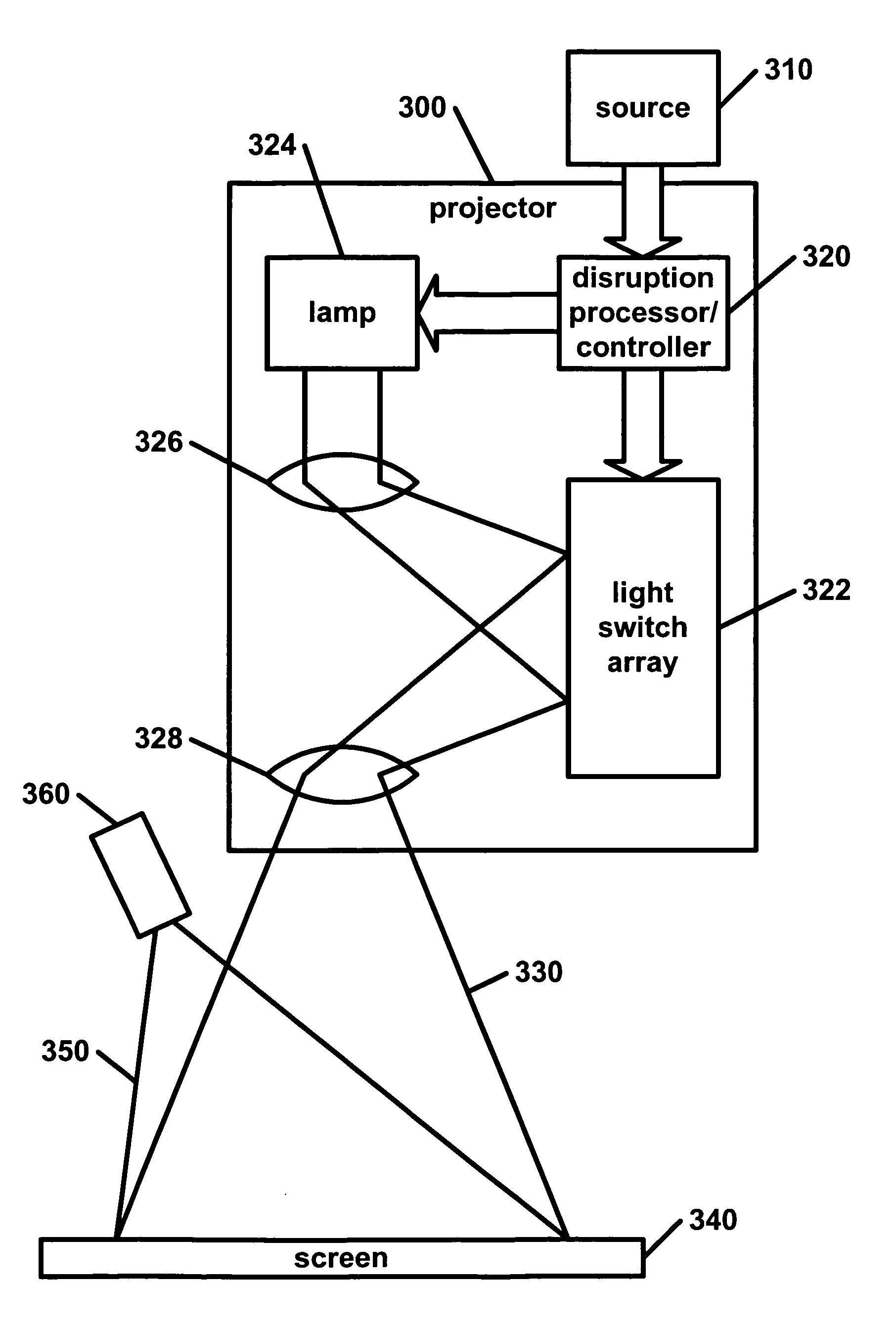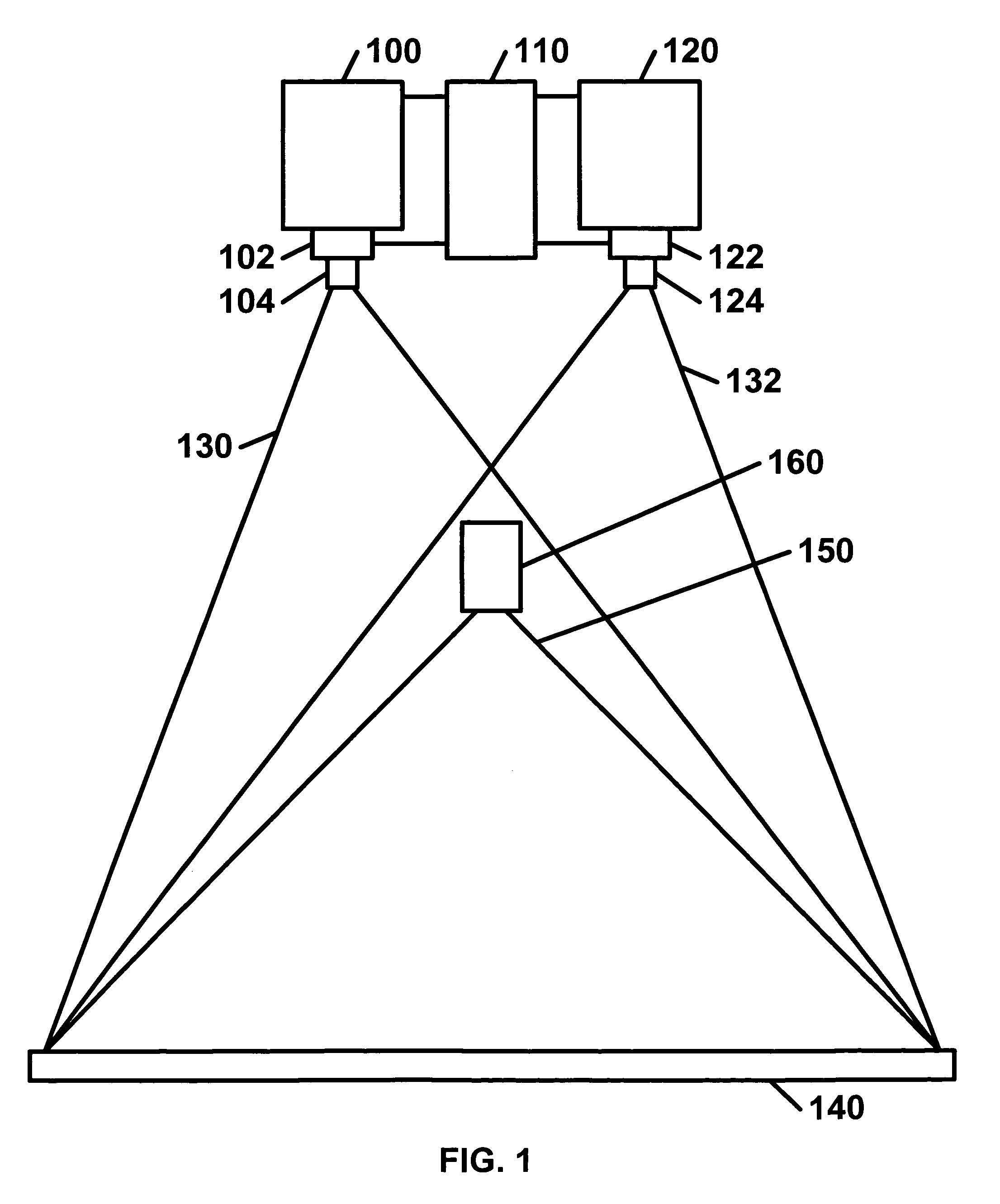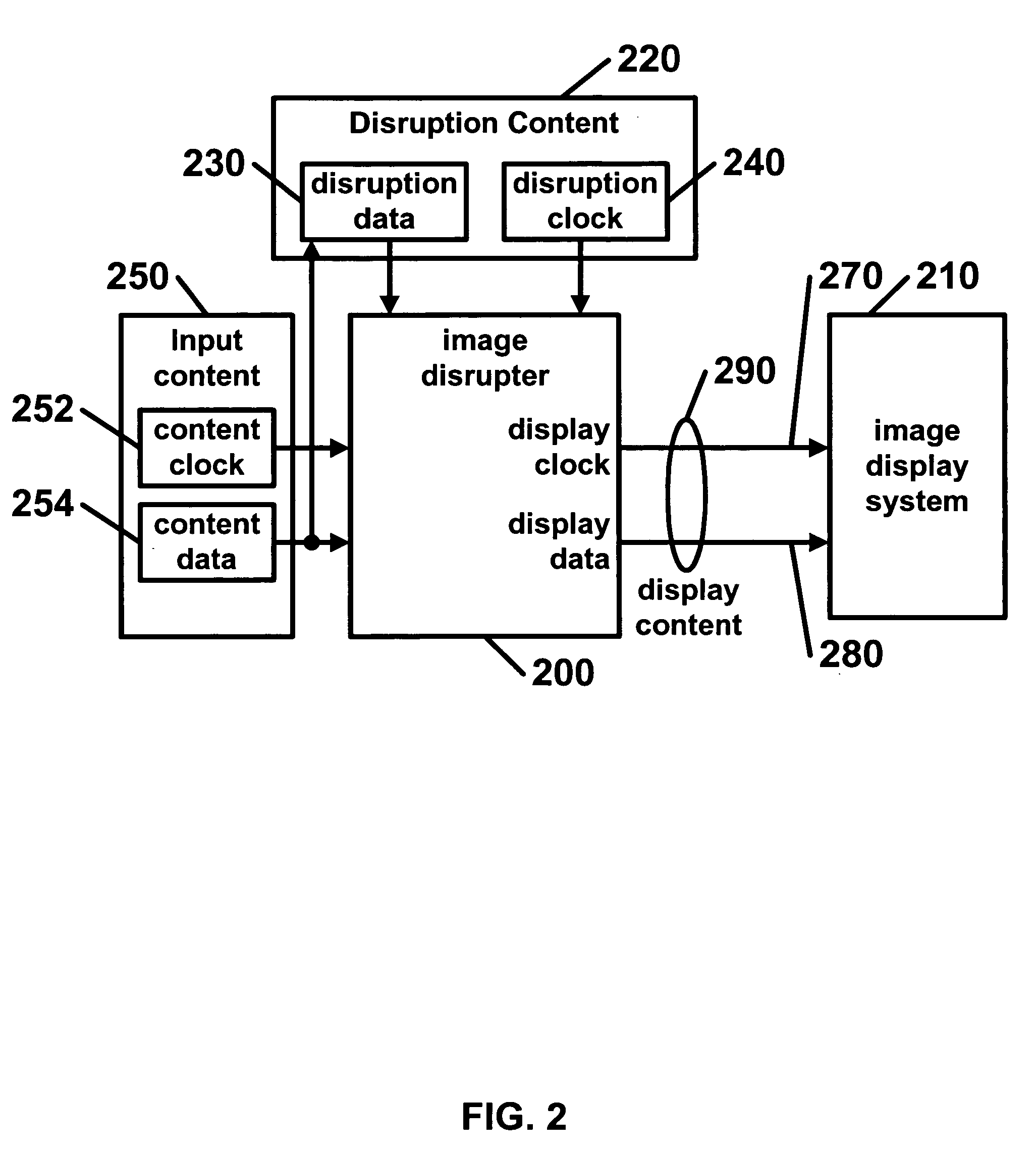Visual copyright protection
a copyright protection and visual technology, applied in the field of visual copyright protection, can solve the problems of pirating videotape content for which they have no rights, depriving the rightful owners of content of revenue, and no method and apparatus have been commercially utilized to protect this content from being effectively recorded, so as to impede the ability of recording devices and generate content specific disruptions
- Summary
- Abstract
- Description
- Claims
- Application Information
AI Technical Summary
Benefits of technology
Problems solved by technology
Method used
Image
Examples
Embodiment Construction
[0055]The present invention solves a long-standing problem of pirates making illegal copies of visual images. The present invention solves this problem by generating optical effects that may be invisible to humans but may also be difficult for an IRD to record. Generating these optical effects may be done by taking advantage of differences between a human's ability to see and perceive an image and the ability of an IRD to record the same.
[0056]Multiple techniques may be combined or utilized individually to produce images that are difficult to record. A first disruptive technique includes creating signals that are invisible to the human eye, but are visible to an IRD, wherein the IRD records the projected signals as images in the visible spectrum. Imaging sensors, within IRD's, typically break their signal into a few individual signals such as red, green and blue; or cyan, magenta and yellow. Display systems are designed so that these discrete signals when viewed together produce a f...
PUM
 Login to View More
Login to View More Abstract
Description
Claims
Application Information
 Login to View More
Login to View More - R&D
- Intellectual Property
- Life Sciences
- Materials
- Tech Scout
- Unparalleled Data Quality
- Higher Quality Content
- 60% Fewer Hallucinations
Browse by: Latest US Patents, China's latest patents, Technical Efficacy Thesaurus, Application Domain, Technology Topic, Popular Technical Reports.
© 2025 PatSnap. All rights reserved.Legal|Privacy policy|Modern Slavery Act Transparency Statement|Sitemap|About US| Contact US: help@patsnap.com



